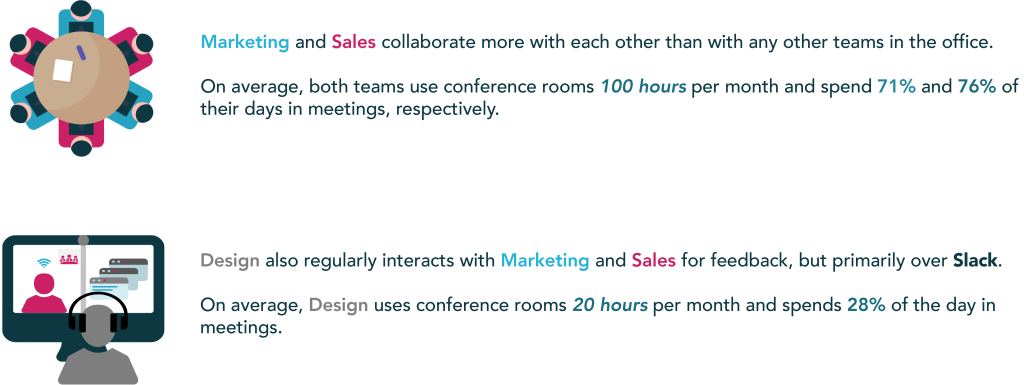Questions always arise as to the role that companies, employees, and providers should have when it comes to data utilization (and rightfully so). Increased media coverage surrounding workplace data practices has put a necessary spotlight on the importance of this topic, and it is only fair that we as a company are brought into the conversation. Here at Humanyze, employees and their privacy are core company values that are always on our minds.
When we first delved into the world of social physics and organizational analytics, we were researching how to accurately predict the outcomes of relationships or negotiations based on how people interacted and communicated. Our PhD research at MIT eventually led us to the corporate world when companies saw compelling value in using Humanyze to inform better business practices and, most importantly, positively impact employees through improved job satisfaction, culture, and engagement. Our mission is rooted in benefitting and protecting employees, but it’s still our responsibility to remain transparent about what our technology can and cannot do, as well as how organizations can and cannot utilize their data. Our leadership team, board members, and all of Humanyze have pledged to maintain open lines of communication and dialogue with our customers, their employees, and the industry at large. As we continue to evolve and expand as a company, so too will our privacy policy in order to continue protecting individually identifiable information at all costs.
What Data Is Collected and How Is It Used?
Humanyze believes that employees should have ownership over their data. When engaging with a customer, we equip them with resources and tools to foster productive conversations with their employees about what data is collected and how it’s used, as well as education on why it benefits employees more than just the business. We only receive data that companies can already access through physical and digital tools about how teams use these tools to work together. For example, our technology can measure how much and how often teams use physical spaces (like conference rooms) or digital mediums (like email or Slack) to collaborate, but never records speech or written content occurring within that space or application. To further protect individuals, everything is grouped by team and anonymized so that we never even receive information that could identify a single employee. We also have a safeguard that removes any teams with less than three members to prevent any ability to infer who the data stems from. Humanyze is compliant with and exceeds European General Data Protection Regulation (GDPR) standards, as well as data protections and processing requirements worldwide. Both myself and our entire leadership team are advocates for equivalent data protections to be mandated in the U.S. and across the globe.
Let’s revisit the conference room example a few sentences back. Our data would read something like:

This kind of insight helps inform a company that:
A) Marketing and Sales frequently rely on each other in-person and should have close physical proximity (if possible)
B) They require adequate meeting spaces to allow for essential collaboration, while Design perhaps requires a space that provides more distraction-free focus.
As another quick example, let’s say a team has voiced concerns that time spent in meetings prevents them from getting work done and results in significant after-hours work. Our data can objectively validate this by visualizing how and where a team spends its day over time, as well as when that work is happening. If our analytics reflect those concerns, managers or leadership now have data-backed insights to objectively inform meeting culture adjustments that better align with team workloads.
Helping Employees, Not Just the Bottom Line
Here are a few examples of how Humanyze helps customers positively impact the most valuable part of any organization: it’s people:
 One customer leveraged Humanyze to identify over-worked teams due to mismanaged workloads and having to support different timezones. Using our analysis, they were able to uncover these groups by noting which teams were sending and replying to communications or in meetings outside of normal business hours.
One customer leveraged Humanyze to identify over-worked teams due to mismanaged workloads and having to support different timezones. Using our analysis, they were able to uncover these groups by noting which teams were sending and replying to communications or in meetings outside of normal business hours.
 We helped another company increase team camaraderie, collaboration, and satisfaction by revealing that teams with certain break structures interacted with more colleagues, were happier at work, and were more productive. The company then implemented similar break structures across the organization.
We helped another company increase team camaraderie, collaboration, and satisfaction by revealing that teams with certain break structures interacted with more colleagues, were happier at work, and were more productive. The company then implemented similar break structures across the organization.
 A department at a multinational firm used Humanyze to validate that tenured employees tended to stick together and weren’t interacting with new hires or younger generations, leading to less opportunities for growth and critical knowledge-transfer. With this pattern identified, the company can implement initiatives that will help maximize visibility between tenured and newer employees to promote growth, engagement, and job satisfaction.
A department at a multinational firm used Humanyze to validate that tenured employees tended to stick together and weren’t interacting with new hires or younger generations, leading to less opportunities for growth and critical knowledge-transfer. With this pattern identified, the company can implement initiatives that will help maximize visibility between tenured and newer employees to promote growth, engagement, and job satisfaction.
Our Ongoing Commitment to Ethics
Privacy has always been in our DNA and for years we’ve been hard at work advocating for employee data protection, but it doesn’t stop there. In addition to strict company policies around data privacy, we are also in the process of forming an Ethics Committee comprised of internal and external experts in the field. The Committee will objectively counsel Humanyze and our customers on issues surrounding the use of employee data to ensure our technology is only used in a beneficial and ethical way.
We vow to ask (and answer) the tough questions to keep an open dialogue as it’s imperative to be transparent about our practices, intentions, and how our technology can be used. We understand the concerns that arise around technologies like ours and the massive implications they can have, which is why the door will always remain open to engage with us on these incredibly important topics.

